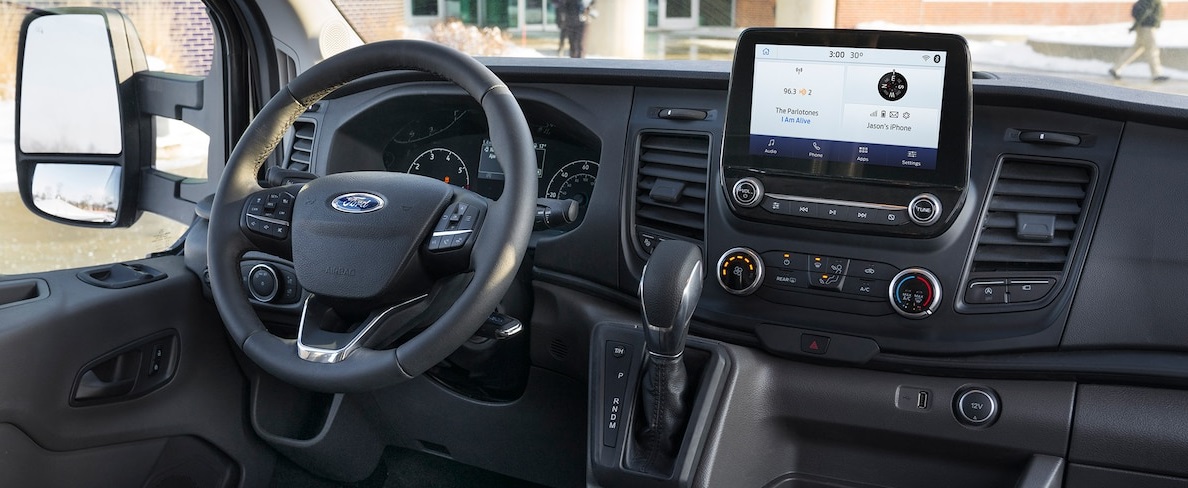
Ford Transit Passenger Van - Best Balance Between Price and Functionality
The Ford Transit offers value and versatility for everyone from skilled contractor to large families. Due to its car-like road features and a broad spectrum of body style, seating and equipment options, the Transit is comfy and capable of various needs. With three available lengths and three options of roof heights and engines, the Transit is quite flexible when it comes to buyers’ demands. The Passenger Van is built to hold anywhere from 5 to 15 passengers, which enables the van for road trips who need to 'drag' a few people and a lot of equipment. With the Transit Passenger, versatility is the name of the game. It's available in different combinations of wheelbases, roof heights, payload ratings, and body lengths, letting customers meet their personal needs. Passenger is available in the three roof configurations: standard roof, medium roof, and high roof. There’re also three wheelbase types: standard wheelbase, long and extended wheelbase length. Seating for eight is standard, but various configurations allow you receive 10, 12, or even 15 passengers, with extra room for their luggage.Trim Levels
The Ford Transit Passenger Van is a full-size passenger van offered XL and XLT trims that are quite different by some standard convenience features. There’re standard and long wheelbase versions as well as low, medium, and high-roof body models. An extended-length body can be placed on the long-wheelbase chassis. The base Transit Passenger Van is the 150, but there is also a heavy-duty Transit 350 with better payload capacities. Standard gear on the XL trim includes 16-inch steel wheels, a rearview camera, a sliding passenger door, 60/40-split hinged passenger doors on the low-roof body design, full power accessories, audio system with input jack and front speakers, vinyl front seats, and a-tilt-and-telescoping steering wheel.
Dimensions
According to the roof and wheelbase configuration, Ford Transit has 6 exterior lengths. • Regular with low roof: 219.9 inches; • Regular with medium roof: 217.8 inches; • Long with low roof: 237.6 inches; • Long with medium roof: 235.5 inches; • Long with high Roof: 235.5 inches; • Extended with high roof: 263.9 inches; • Extended wheelbase versions can accommodate up to 15 passengers.Performance
The Transit's base engine is a 3.7-liter V6 rated at 275 hp and 260 lb-ft of torque. For more power, the Transit can be fitted with a turbocharged EcoBoost 3.5-liter V6 that triggers 310 hp and 400 lb-ft of torque. Also available is a turbocharged 3.2-liter diesel-powered inline 5-cylinder good for 185 horsepower and 350 pound-feet of torque. A CNG/Propane engine prep package is also available for the 3.7-liter V6. All Transits 'arrive' with a 6-speed automatic transmission that transfers power to the rear wheels.Driving
Driving a van like the Transit isn’t just going to be swift with excellent maneuvering, but this van is reliable and stable with enough power and torque to for a smooth ride. The body also identifies movement when hit a side wind, as expected from such a large slab flat surface, so you need to drive carefully on the highway, and especially after passing a bigger van or truck. Depending on which length is taken, for example, Ford Transit 12 Passenger Van or Ford 15 Passenger Van, this van can sometimes be changeling to park, thankfully a rearview camera is an option.Related Articles
- Ford Transit Connect Passenger Van - Top Offer in Compact People Carrier Segment
- Mercedes Sprinter Passenger Van - Reliable, Fast, and Unique
- Mercedes Metris Passenger Van - Ideal for Family and Small Business
- The Best 12 Passenger Van for Business and Family
- 10 Passenger Vehicles – Short but Complete List
- The Best 15 - Passenger Van For Rent and Sale
- Best Luxury SUV: 12 Eye-Catching Road Superstars
- Best Midsize SUV – 11 Most Reliable Players on/off the Road
- Best Used SUV – Top 13 Road Surfers for Every Pocket
- 10 Best 3 Row SUVs for City and Freeway
Interior
Inside the Ford Transit, things can be comfy and sleek, or rather bare and ready to take a load or whatever it’s your business deals in. If you’re moving people, it can carry 8, 10, 12 or 15 passengers and even at the max number stuff won’t be too cramped. Thanks to the rubble or foot traffic, there’s a durable vinyl floor that’s not difficult to clean. Anyway, there’s a tremendous ergonomic dashboard with the infotainment at center stage, a multifunction steering wheel in front of a gauge cluster that has a driver info display. With a completely adjustable seat and telescopic steering, big mirrors and driver aids, a proper driving position is available. The configurable rear setting is comfy with durable materials, even though the front two provide a lot more, and the all-inclusive combination is the first-in-class interior.
Utility
Maximum cargo capacity behind the first row goes from 212.1 cubic feet to 414.1 cubic feet, depending on length and roof height. And due to a low floor, there’s no need to climb over wide doorsteps to enter the cabin and no need to use the rear bumper as a stair when going inside the cargo area.Safety
When any passenger van transports people, safety becomes extra important. On the seats, you’ll find 3-point safety belts on for all passengers. The drivers are treated to airbags in standard positions, but for the rear passengers, there’s a safety canopy system, which is a full-length, while the side-curtain airbag will do a great job of protecting from side impact. There’s also lane keep assist along with a side-wind stabilization to minimize the effect of a sudden side gust while driving. The Ford Transit received a five-star side crash and four-star frontal crash rating in the NHTSA’s (National Highway Traffic Safety Administration) crash test.
